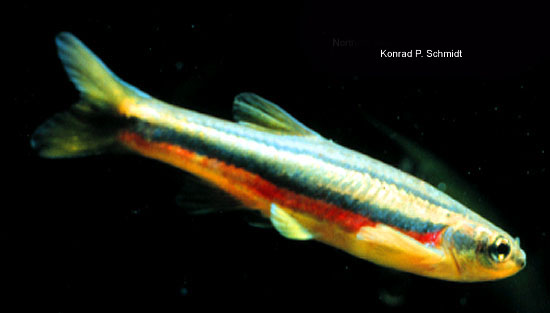| Leuciscidae (Minnows), subfamily: Laviniinae |
| 8 cm TL (male/unsexed); max. reported age: 3 years |
|
demersal; freshwater, non-migratory |
| North America: Atlantic, Great Lakes, Hudson Bay, and upper Mississippi, Missouri and Peace-Mackenzie River drainages, from Nova Scotia west to Northwest Territories and British Columbia in Canada; south to northern Pennsylvania, Wisconsin and Nebraska in USA. Isolated population in South Platte River system in Colorado, USA. |
|
Chrosomus eos is distinguished from a similar species C. erythrogaster by having more rounded, shorter (about equal to eye diameter) snout and more upturned mouth, with chin in front of upper lip. Other characters useful to identify this species include 70-90 lateral scales and red or yellow belly, head, and fins in large males (Ref. 86798). |
| Inhabits lakes, ponds, bogs, and pools of headwaters and creeks. Usually occurs over silt, often near vegetation (Ref. 86798). Feeds mainly on algae, but also on zooplankton and aquatic insects. Preyed upon by fishes, kingfishers and mergansers (Ref. 1998). Spawning occurs in spring or early summer (Ref. 1998). Used as bait in parts of Ontario and Quebec (Ref. 1998). |
|
Least Concern (LC); Date assessed: 03 November 2011 Ref. (130435)
|
| harmless |
Source and more info: www.fishbase.org. For personal, classroom, and other internal use only. Not for publication.
